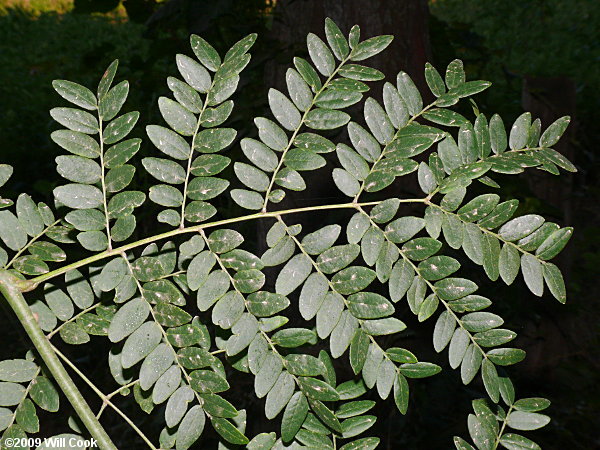
| Honeylocust is an uncommon, medium-large tree of waste places and edges, introduced from the mid-western US. The leaves are either pinnately or bi-pinnately compound, with many small, oval leaflets on each leaf. The main leaf at left is bi-pinnate and has 154 leaflets! (Yes, I counted them.) Chatham Co., NC 6/28/09.
| 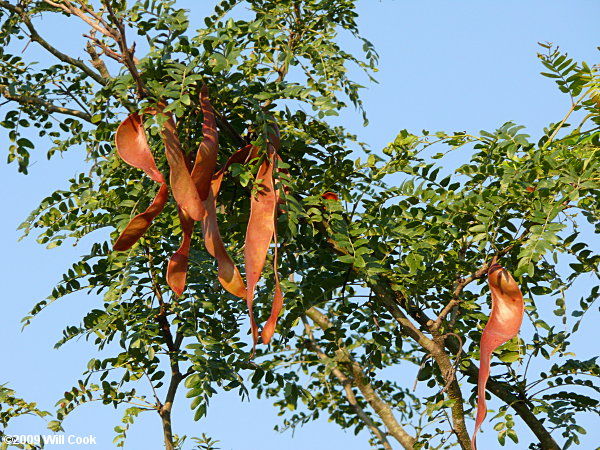
| Chatham Co., NC 6/28/09.
|
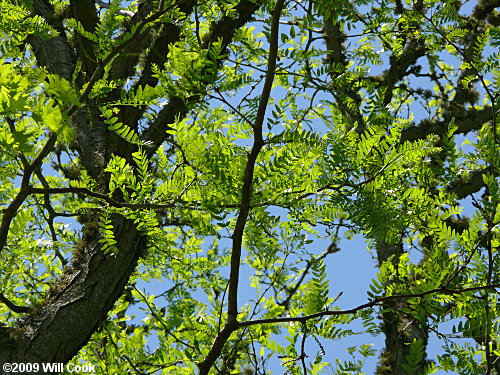
| Granville Co., NC 4/26/09.
|
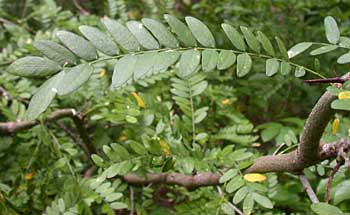
| Leaves are sometimes just once-pinnately compound, as here. Black Locust (Robinia pseudoacacia) is the most similar species, but has much smaller thorns and smaller pods.
| 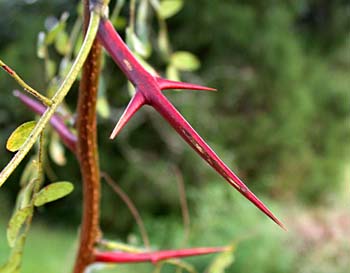
| The large, wicked thorns are often forked. Some cultivars are thornless. |
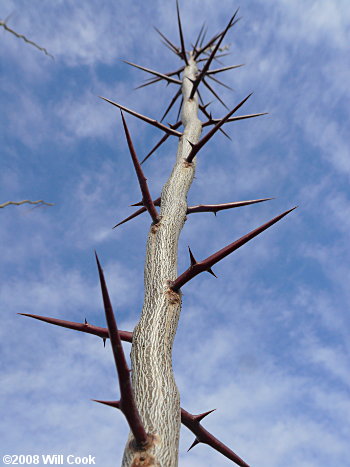
| Durham Co., NC 12/6/08.
|
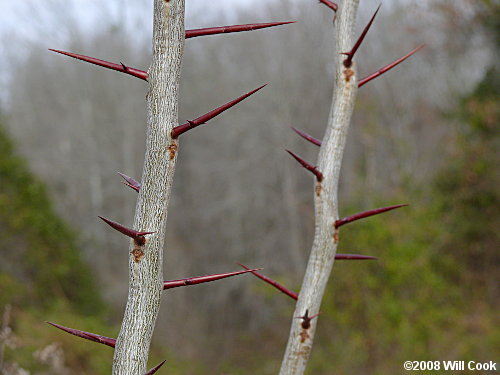
| Durham Co., NC 12/6/08.
| 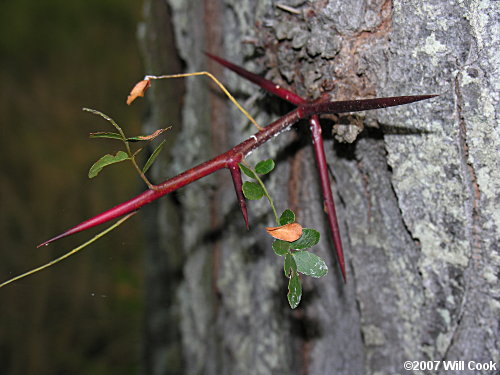
| Durham Co., NC 8/19/07.
| 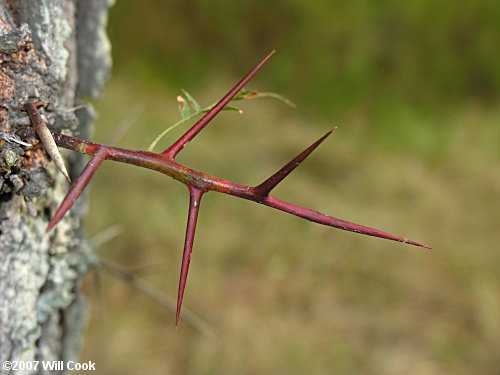
| Durham Co., NC 8/19/07.
|
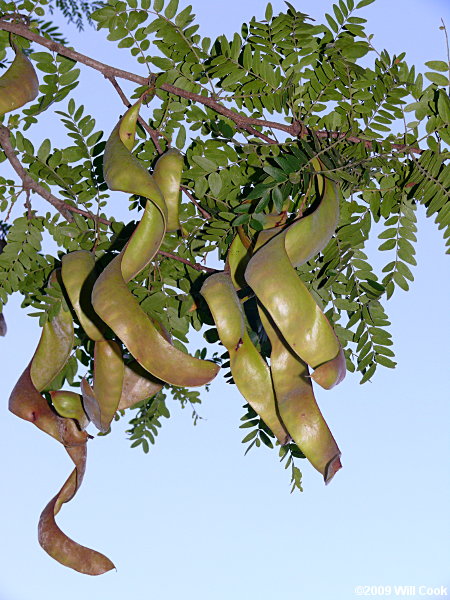
| The pods are broad, long, and twisted. Chatham Co., NC 6/28/09.
| 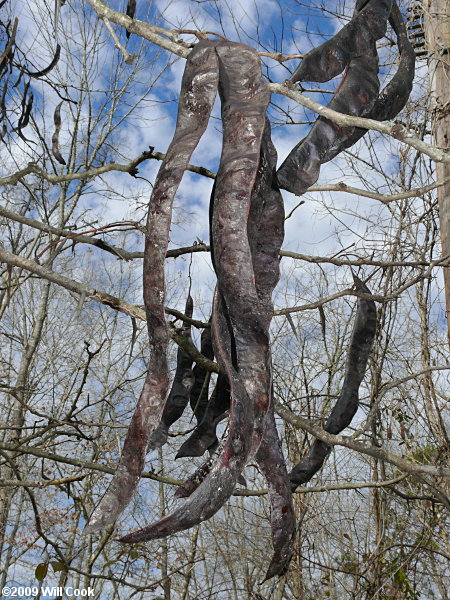
| The pods turn black when ripe and contain a sweet-tasting sticky substance that gives Honeylocust its common name. Orange Co., NC 12/27/09.
|
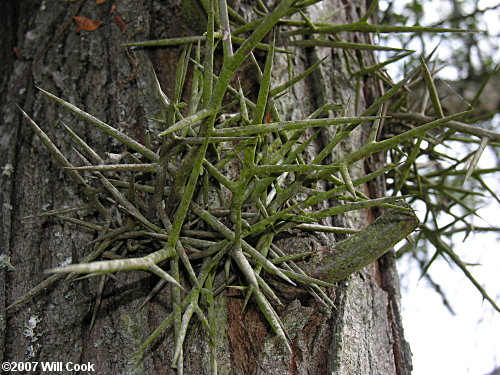
| Durham Co., NC 8/19/07.
| 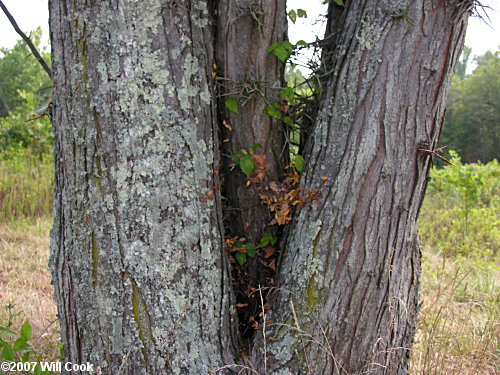
| Durham Co., NC 8/19/07.
| 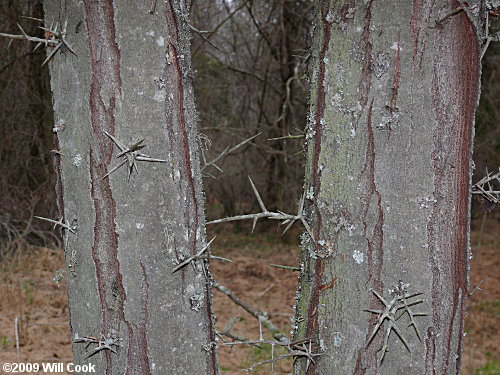
| The bark of small trees soon breaks into plates. Orange Co., NC 1/11/09.
| 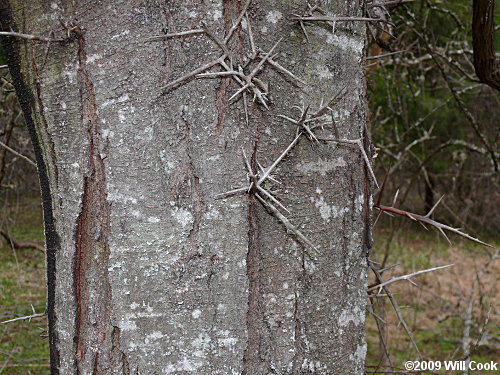
| Orange Co., NC 1/11/09.
|
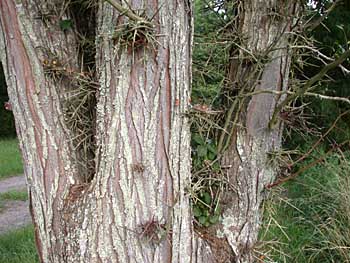
| The trunks of open-grown trees can be quite heavily armed. |
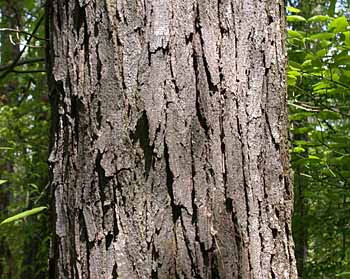
| The bark on large trees breaks into long ridges. |
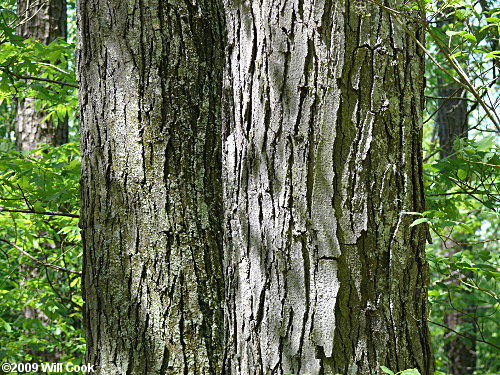
| Bark of a large tree. Granville Co., NC 4/26/09.
|
More information:
Trees of Alabama and the Southeast
US Forest Service Silvics Manual
Virginia Tech Dendrology
Recommended Tree, Shrub, and Woody Vine Identification Guides
|
|

















